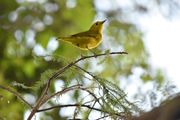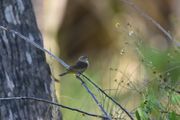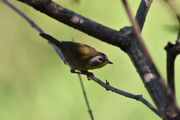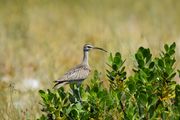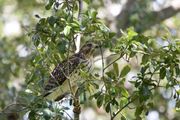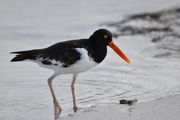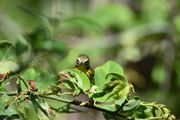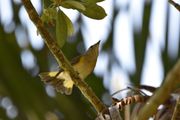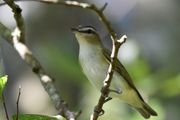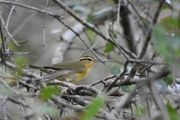For us here in Florida, the Fall is a very exciting time of year. The rainy Summer begins to give way to a dry, mild Winter. Like countless tourists and retirees, many species of birds from the northern parts of the Americas begin their journey southward to escape the impending cold. Most species will only stop in Florida briefly before continuing to South America and the Caribbean, but some stay here for the whole winter. Migration season begins in July and ends in late November, peaking in September and October. The last of the wintering birds will typically leave by late Spring. Raptors, shorebirds, and warblers are the main birds to be on the lookout for during this time, but other birds will appear in greater numbers as well.
Beginning in July, you might start to encounter kettles of Swallow-tailed Kites, but they do not stay here for long and will be gone before September. After their departure, you begin to see more familiar hawks. Cooper's Hawks and Red-shouldered Hawks will start to appear in greater numbers. You may encounter a Broad-winged Hawk if you are lucky. Falcons will appear more frequently starting with the American Kestrel, and followed by the more elusive Peregrine Falcon and Merlin. Many raptors will be headed along the gulf coast towards the Florida Keys, some to nest there for the winter, others on their way over the Atlantic to South America. In late November, you may be lucky enough to encounter the elusive Short-tailed Hawk or a Northern Harrier.
New species of shorebirds and seabirds will appear in August. Some species, like the Black Skimmer are easy to identify, but the various sandpipers species will prove more difficult. Shorebirds tend to migrate quite early and in spectacular numbers. A few species you might see are the American Oystercatcher, the Black Tern, and the Eurasian Whimbrel.
As early as late July, you will start to notice new species of warblers and vireos trickling in. Some of the earliest birds to make an appearance are the vireos, such as the Yellow-throated Vireo and the Red-eyed Vireo. In mid-September, we see another wave carrying new species like the Blackburnian Warbler and Chestnut-sided Warbler. After late September, the dominant warbler species will be the Palm Warbler which appear in massive numbers and tend to stay for the whole winter. At the peak of the Fall migration, almost every tree will have at least one warbler flitting between its branches. The warblers you encounter might not appear as they do in field guides because they will have lost their colorful breeding plumage. Most will be feathered in mix of drab olive and yellow. This can make them a challenge to identify. They will be mostly silent as their main objective is fattening for their thier journey southward, so recognizing the already difficult songs of the warblers may not help you much.
Some other warblers you may encounter at this time are:
In October, we will see another wave of new birds. Grosbeaks, cuckoos, thrushes, and some of the more exotic warblers, like the Golden-winged Warbler are expected to make an appearance around this time. We will also begin to see the ubiquitous Yellow-rumped Warbler, the most common warbler in the United States. When mid-November rolls around, most of the transient birds will have either be gone or beginning to taper off. Ducks and other waterfowl are the last migrants and tend to stay for the whole winter. Expect to see grebes, seaducks, dabbling ducks, geese and others around this time. If you look along the horizon at the beach in the Winter you may be lucky enough to see an Eider or a Loon. Sparrows also make their appearance around this time, such as the Chipping Sparrow.
